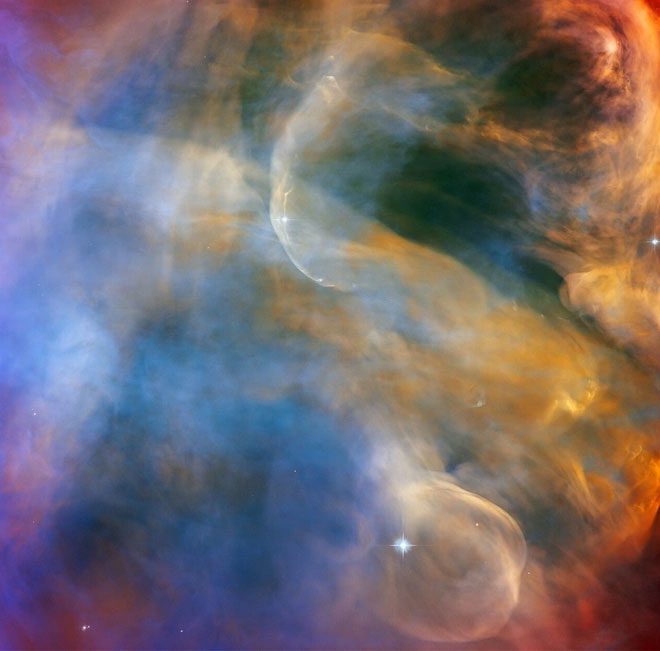From the perspective of the Hubble Space Telescope, the Orion Nebula is depicted with colorful clouds. The white streak in the middle describes a rare phenomenon in the universe.
The European Space Agency (ESA) recently shared images of the Orion Nebula, captured by the Hubble Space Telescope. Located approximately 1,344 light-years from the Sun, this region is a site of young star formation and is one of the most studied and photographed areas of the Milky Way.
In the image, the Orion Nebula is illustrated with vibrant, colorful clouds, resembling an oil painting. The white streak in the center of the photo is a Herbig-Haro object, created from a rare interaction in the universe.

Orion Nebula captured by the Hubble Space Telescope. (Image: ESA).
According to ScienceAlert, several special factors are needed to create a Herbig-Haro object. First, there must be a young star that has just formed and contains a lot of energy. As material accumulates onto the star, powerful plasma jets are emitted from the star’s poles.
Many studies suggest that some of the material orbiting the star is redirected along the magnetic field lines outside the star. These magnetic field lines act like an accelerator; as the material moves toward the star’s poles, it is propelled at extremely high speeds.
A Herbig-Haro object forms when this material collides with the surrounding gas at high speeds. They are heated and create a “sword of light” from the young star. In the case of the Orion Nebula, the Herbig-Haro object is designated HH 505, and the triggering star is IX Ori.
According to Digital Trends, the image of the Orion Nebula was captured by the Hubble Space Telescope’s Advanced Survey Camera. This device specializes in capturing data from the visible light spectrum but can also analyze the far ultraviolet region of the spectrum.
In the Orion Nebula, there are many ultraviolet rays coming from large stars. They interact with the dust and gas of the nebula to slow down the formation of new stars.
Since Herbig-Haro objects exist for only a short time and change structure rapidly, astronomers can study HH 505 to understand how stars blow material away from the gas surrounding them.




















































